Join the VIP Teacher Club!
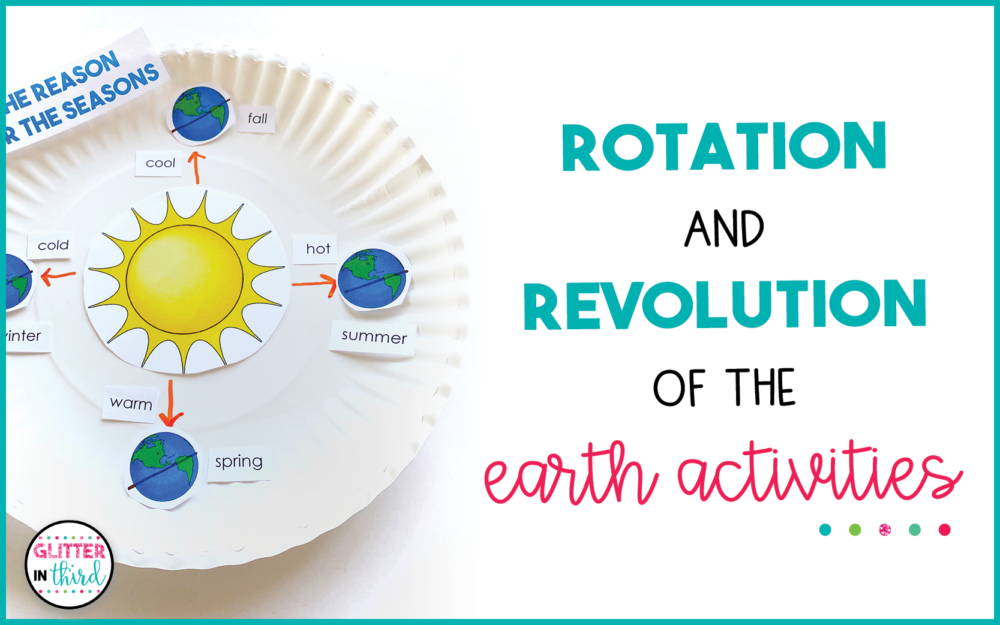
Struggling to find Earth rotation and revolution activities?
I have to be honest, teaching Earth Science used to stress me out a little.
My goal was to always plan extravagant lessons that were interactive, yet ones that my students could truly learn from. As kids we always remember the fancy foaming volcanoes and the field trips for learning about ecosystems, right?
While those lessons are fun and so memorable, I was finding that sometimes the more “interactive” activities were in the classroom, the messier and more expensive it was, which then sometimes led to minor chaos, extra clean-up time, and not always a clear learning objective. Can you relate?
Even though it stressed me out a little, I loved teaching Earth Cycles. When the stars aligned and my students were completing hands-on projects and could tell me what they were learning, I was left feeling so fulfilled!
I do believe that teaching Earth Cycles requires a lot of hands-on engagement in order to make learning more meaningful and relatable.
We remember the foaming volcanoes, but we also remember the awful lectures that drug on and on during Geology while studying rocks. Do you remember that? I sure do! Basically torture! 😉
My reason behind all of my reminiscing is to help you create balance in your classroom as you plan your lessons for Earth Science. I’ve created some super simple activities for you that are affordable (some even totally free!), mess-free, and completely hands-on!
PSST- want a FREE Earth’s rotation craft?
Fill out the information below to get this FREEBIE sent immediately to your inbox!
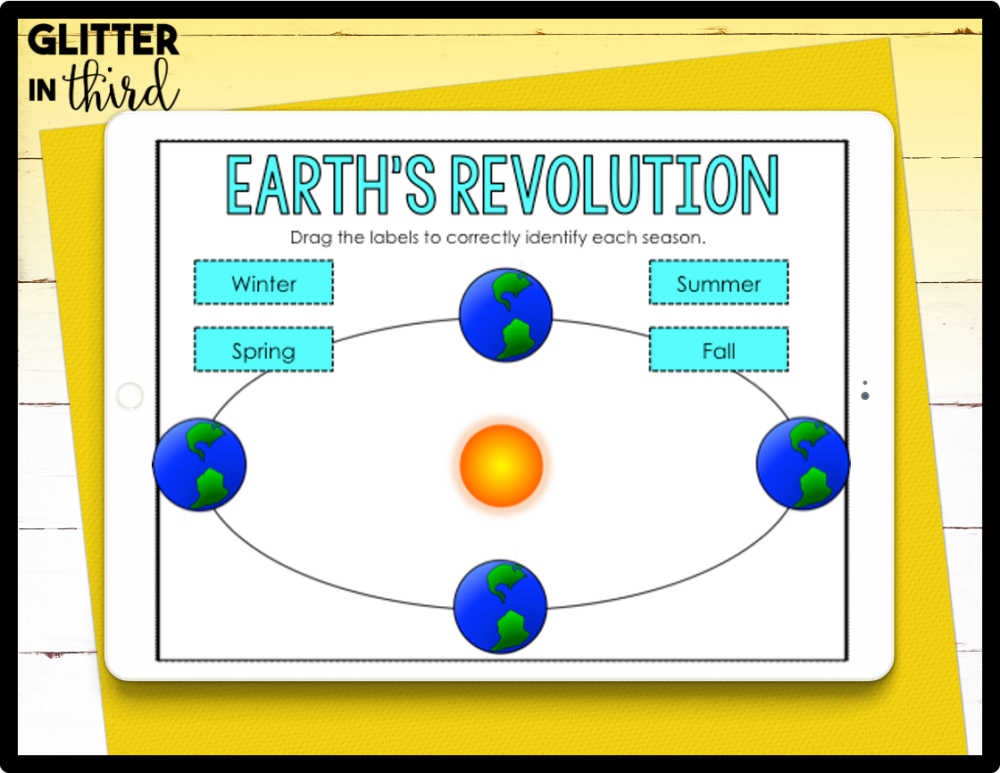
Teaching Earth’s rotations and revolutions is tricky in the classroom face-to-face, let alone if you’re trying to teach virtually!
If you’re in the middle of online learning right now, but needing something interactive for a rotation and revolution lesson, I’ve got you covered!
This Google Classroom activity is a combination of drag-and-drop and short answer questions. It touches on vocabulary such as axis, orbit, cycle, and the difference between rotation and revolution. By the end of this activity, students will be able to explain how day and night happen, as well as why seasons occur!
If you’re back in the classroom this semester doing face-to-face learning, of course this is a great option, as well. No clean-up, no prep, and an answer key is provided!
Here’s another option for both face-to-face and virtual classrooms!
This rotation and revolution interactive notebook includes a comparison chart, skills practice identifying daytime or nighttime in certain countries, as well as a rotation vs. revolution venn diagram.
Your students will be such pros at understanding the differences by the end of this. 🙂
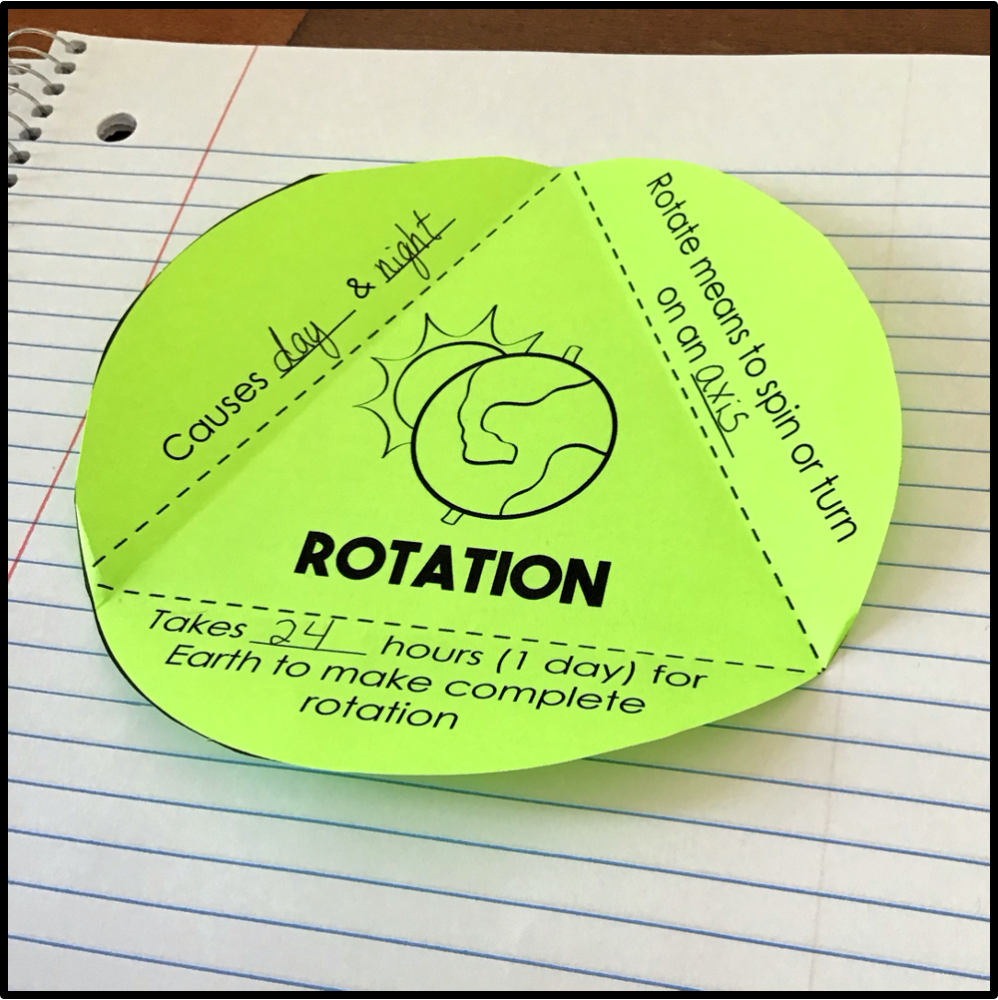
You have the option to cut and paste into a notebook to make it more hands-on, but it can also be converted into a digital PDF if you’re in need of more online resources!
You can totally teach rotation and revolution by getting up and moving!
No materials required, and the students may enjoy getting outside for this!
Pair your students up and let them decide who is going to be the Earth and who is going to be the Sun.
Begin by explaining that a revolution is 365 days, or one year, and a rotation is 24 hours, or one day.
The partner who is the sun needs to stand in the center, and the other partner needs to stay a couple arm lengths away and picture an imaginary circle going all around the sun.
You could even draw a circle on the ground around the student who is the sun to give a better representation for the “Earth” student.
The “Earth” will need to take one small step to start the circle to model a rotation. To model a revolution, that student would need to take 365 steps around the circle to completely orbit the “Sun.”
This is a super simple way to explain the difference between rotation and revolution.
You can always add your own twist to better explain how daytime and nighttime occur, as well!
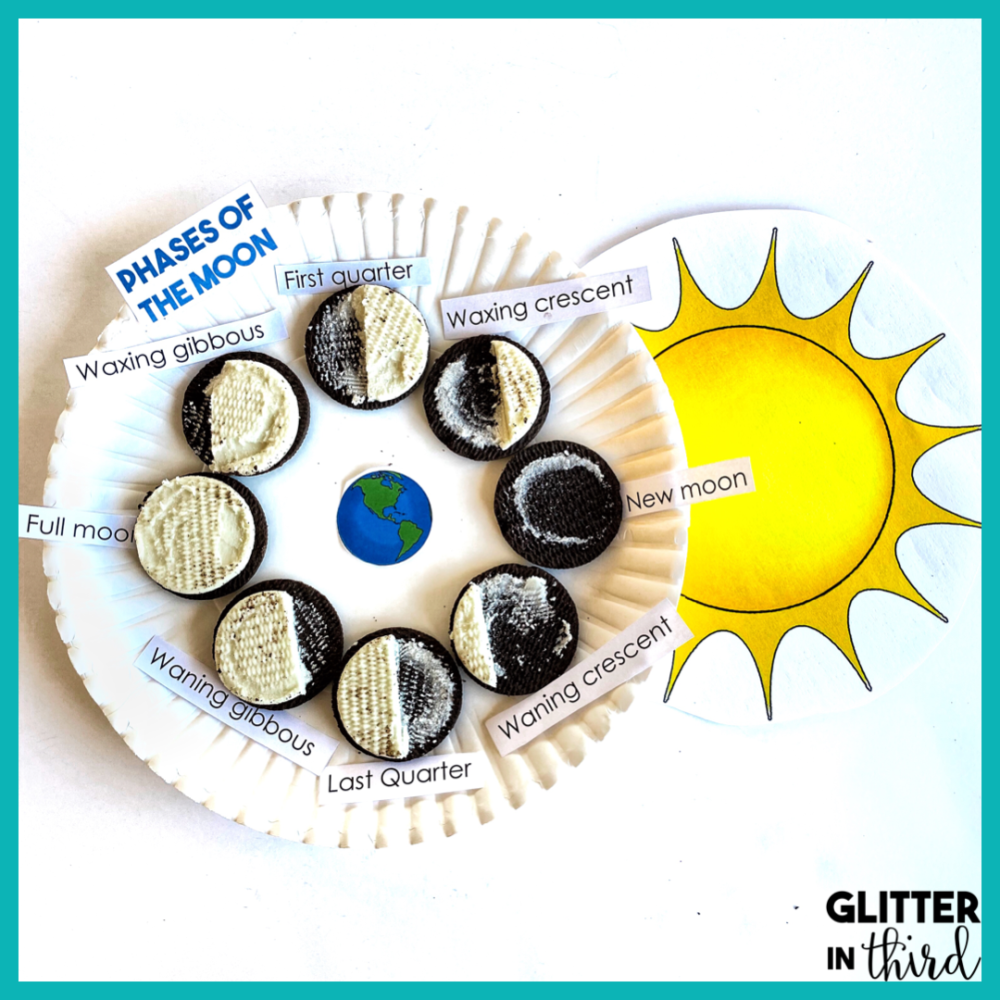
Your students will love this, and I think you might too – grab a box for you to enjoy after the activity! 😉
This moon phase activity uses Oreo cookies to help explain the phases of the moon. You’ll also need paper plates! All instructions and pieces are included and you have the option to print in black and white or color!
The Earth will go in the middle of each student’s plate, and the sun will be near the edge of the plate to better simulate what the moon looks like when closer or further from the sun.
Start with New Moon closest to the sun and the Full Moon goes on the opposite side. The moon takes about a month to completely orbit Earth, so you can explain that’s why a New Moon and Full Moon only happy once per month!
Learn more at the blog post here!
Did I mention this activity is totally free? 🙂 Snag it here!
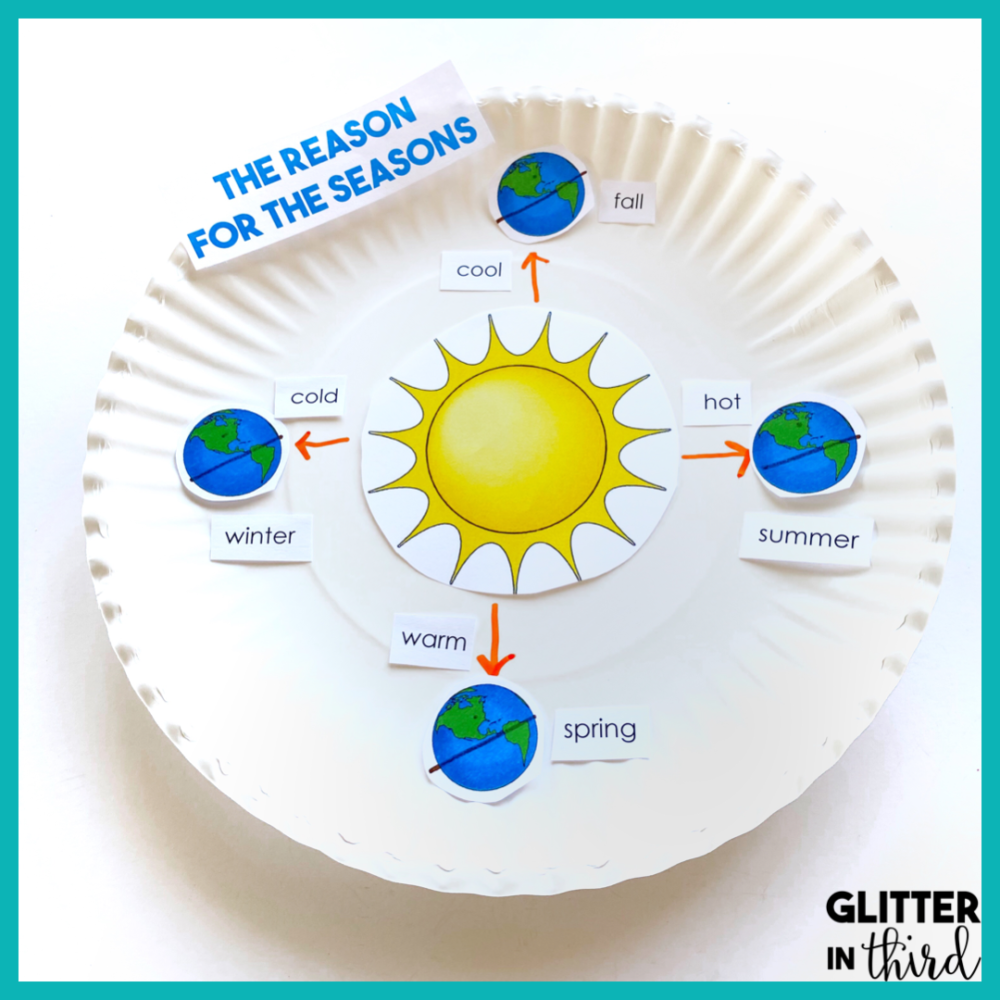
Lastly, I’d love to share with you this Reason for the Seasons freebie! Check out the blog post all about it here.
This activity is extremely helpful when teaching about the Northern and Southern Hemispheres and provides a visual representation for why we experience different temperatures throughout the seasons.
Have the students place their sun in the center of their paper plate or whatever workspace they’re using. As you place the pictures of the 4 Earths north, south, east, and west of the sun, be sure to keep them tilted in the same direction. This will provide a clearer visual for why and when our hemispheres experience different temperatures! And don’t forget… free! 🙂
Fill out the information below to get this FREEBIE sent immediately to your inbox!
I want to help make your Science class memorable for your students, without all the mess that comes along with conducting those fun experiments. 😉
I hope these Earth rotation revolution activity ideas bring you and your students great discussion, interaction, and take the stress out of planning for you!
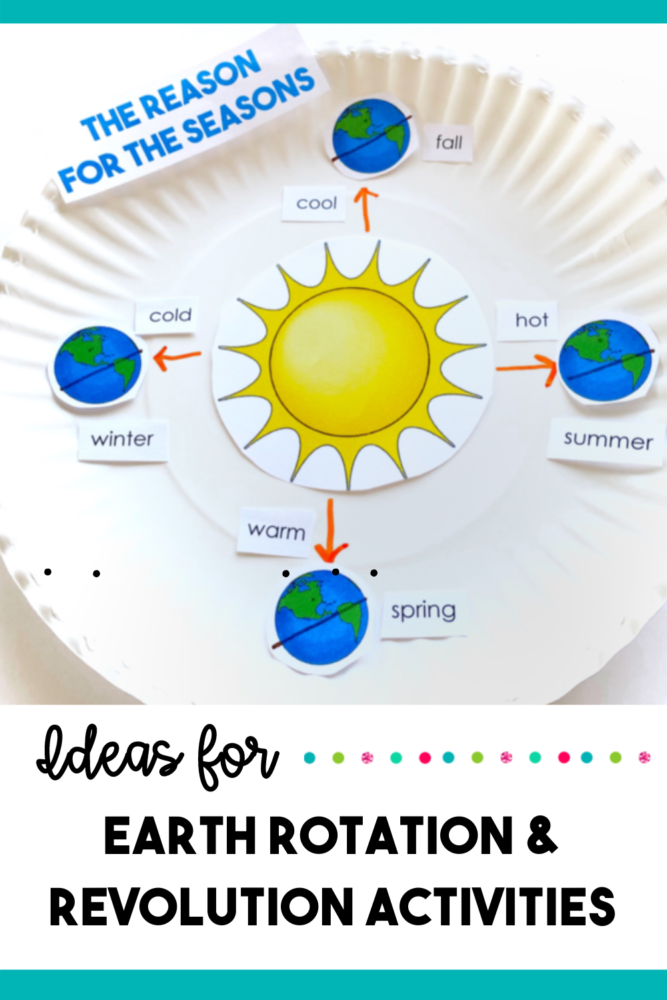

Hey there, I’m Kelly! I I love helping teachers save time with technology and resources so they have more hours in the day to spend with family and friends. Take a look around to find new ideas that you can implement in your classroom today!